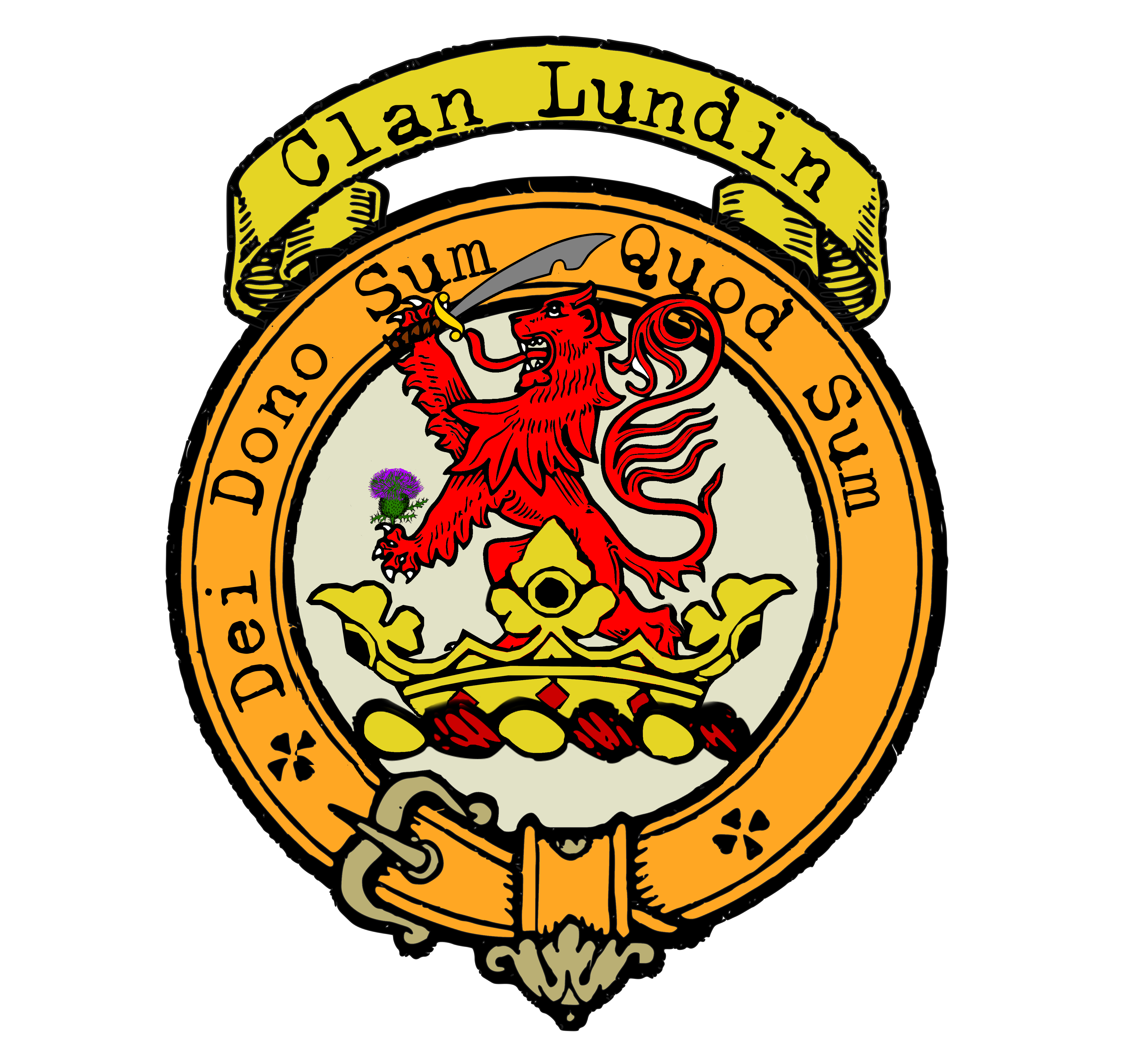Clan Lundin
|
|
CREST: A lion Gules, issuant from an antique crown Or, holding in its dexter paw a sword erect and in its sinister a thistle slipped both Proper MOTTO: Dei dono sum quoe dum TRANSLATION: By the grace of God I am what I am |
| The Lundin name is said to have originated from Robert de London, who arrived in Scotland before the reign of Alexander II. The clan’s roots took hold in two regions: Forfarshire and Fife. Philip de Lundin was granted a barony near Largo in Fife, while his brother Malcolm received lands in Forfarshire. These early settlements would become the foundations of the Lundin clan’s influence and prominence.
A pivotal figure in the Lundin lineage was Thomas Durward, son of Malcolm. Thomas was appointed doorward by William the Lion, a position of great trust and confidence within the kingdom. The doorward’s role as a gatekeeper and janitor implied close personal ties to the king. Thomas later adopted the surname Durward, marking the beginning of an illustrious line. The Lundins’ close connection to Scottish royalty became even more apparent in subsequent generations. Alan Durward, son of the doorward, was appointed justiciar and took on the title of ‘Earl of Athol’ despite lacking legitimate right. His marriage to the natural daughter of Alexander II further solidified the clan’s ties to the royal family. The Lundin lineage took a significant turn when Robert, a natural son of William the Lion, married the heiress of the Lundin house. As a testament to this marriage, Robert assumed the Lundin surname, signifying the proud lineage of the clan. The Lundin coat of arms proudly displays the family’s twice-royal blood, a symbol of their noble heritage. Throughout the years, the Lundin estates and titles passed through various hands, often influenced by marriages and alliances. In 1648, Sir John Lundin of Lundin was succeeded by his daughter, Margaret. Her husband, Robert Maitland, assumed her name and the family coat of arms, along with the estates. The couple played active roles in the political turmoil of their time, participating in the attempted rescue of Charles I and fighting at the Battle of Worcester in 1651. By 1679, the Lundin lineage once again merged with another prominent Scottish family. John Drummond, through his marriage to a Lundin descendant, received a royal warrant allowing him to incorporate his wife’s coat of arms, which closely resembled those of the Kings of Scots. John held esteemed positions, serving as Deputy Governor of Edinburgh Castle and later as Secretary of State. His elevated status culminated in his creation as Earl of Melfort in 1685. While the Lundin estates were ultimately sold by later generations, the lineage of the clan continued through James Lundin, the son of John Drummond. The legacy of Clan Lundin, marked by royal connections, esteemed positions, and a proud heritage, lives on in the annals of Scottish history. |
|
Citations:
|
|

Purchase @ Redbubble
Purchase @ Amazon.com
Purchase @ Amazon.co.uk

